Speco Technologies SecureGuard SG719 Handleiding
Speco Technologies
Bewakingscamera
SecureGuard SG719
Bekijk gratis de handleiding van Speco Technologies SecureGuard SG719 (3 pagina’s), behorend tot de categorie Bewakingscamera. Deze gids werd als nuttig beoordeeld door 52 mensen en kreeg gemiddeld 4.3 sterren uit 26.5 reviews. Heb je een vraag over Speco Technologies SecureGuard SG719 of wil je andere gebruikers van dit product iets vragen? Stel een vraag
Pagina 1/3

SecureGuard Server®
About this Quick Setup Guide
Before operating the unit, plesae read this user’s guide thoroughly and
retain it for future reference.
Product Components
Internal Connections continued
Quick Setup Guide (Ver.2. )6
Speco Technologies SecureGuard Server ®
Model: SG719(2U)
The following components are included:
QT: 1
**Server comes with rack ears mounted**
QT: 1
Power Cable
QT: 2
Internal Connections
Front View
Power on the Server
• Please follow the proper power ON procedures to avoid damaging the server.
• Connect all necessary components, e.g. monitor and cameras, before powering
•
the server.
Power ON the server by depressing the Power Switch ( ) to boot up the server.1
WARNING: To reduce the risk of database corruption due to power loss,
Speco strongly urges use of an uninterruptible power supply with our
SecureGuard servers.®
Login to Windows
• After boot up, at the Windows login screen, you will see that the default user
account is “ ”. There is associated with the default Speco Tech no password
account. It is highly advisable to set a password after logging into the
Windows home screen for the first time. See .Image 1
Note: The server comes pre-loaded with SecureGuard Server ®
software.
• At the Windows Desktop home screen, run the SecureGuard®
Conguration Tool to setup the server by double clicking on
the SecureGuard® Conguration Tool icon. See Image 2. Image 2
•If prompted to select or create a System Recordings folder, point to the storage
drive where the recordings will be stored (Recordings D:). Otherwise move on
to the next step. See Image 3.
Note: SecureGuard® servers come with independent hard drive(s) for the
storage recordings and the operating system. DO NOT store recordings on
the hard drive dedicated for the operating system.
Run SecureGuard® Conguration Tool
Rear View
Image 3
Quick Setup Guide
Image 1
WARNING: Please store your password
in a safe location. Speco Technologies will
not be able to assist you in recovering a
lost password.
Run SecureGuard® Conguration Tool continued
Image 4
Image 5
Setting up Network
Image 6
•To disable the scheduled update check, uncheck the box next to “Enable
Automatic Updates”. Click “Apply” to confirm changes.
• Note: Server must be connected to the internet
to search and download updates.
•When prompted, enter the
default username admin
and default password
admin to access the
SecureGuard® Configuration
Tool. See Image 4.
•At the “System” tab, ensure
“System Recordings” file
path is pointing to the
storage drives. See Image 5.
•Reminder: SecureGuard®
ser ers come with v
independent hard drive(s) for
the storage recordings and the
operating system.
•DO NOT store recordings in
the ar drive dedicated for h d
the operating system.
Setting up Setting up Software UpdatesSoftware Updates
•SecureGuard® will be set to
check for updates on a daily
basis. The time to check for
updates can be modified by
simply changing the hour,
minute, and meridiem. You
can manually check for
updates by clicking “Check
Now”. See Image 6.
Setting up Database Backup
•The “Database” tab is where you
import or export settings and back up,
restore, or validate the SecureGuard®
database. See Image 7.
Image 7
•Choose where you would like to
backup your database by clicking
“Browse”.
•Note HIGHLY: It is recommended
that you backup your database to a
separate drive and NOT to your C:
drive.
Adjust the time’s hour, minute, and
meridiem to specify what time the
database will be backed up. And
lastly, select whether the database
will be backed up on a daily basis or
weekly basis. Once completed, click
“Apply”. See Image 8. Image 8
Image 9
Image 10
•Note: For servers with Dual Network
Interface Cards, it is that highly advisable
the camera and the client connection
network traffic be kept separate.
•In the “Network” tab, fo “Client r
Interface” select the network adapter that
remote client(s) will connect to. For
“Video Interface” select the network
adapter that the camera(s) will connect to.
See Image 9.
•To register the server with Speco’s Free
DDNS, ensure the “Enable Speco
DDNS” checkbox is selected, and enter a
name for the server in the “Host Name”
field and click on “Submit/Update”. See
Image 10.
•If the server name isn’t currently
registered with Speco’s DDNS server,
then the registration will be successful. If
it fails, use a different name for the “Host
Name” See Image 11.
•By default, the server uses ports 7312 and 7313 for
network communication.
•Note: To avoid network conflicts with devices that also use the server default
ports 7312, 7313 7314, and the option of changing the port numbers is available
through the Configuration Tool. The servers come shipped with an inbound rule
for Window’s firewall that allows communication on the server default ports. If
the server default ports are changed, please ensure the existing inbound rule is
updated, or create a new inbound rule permitting communication on the new
server port values.
Image 11
Adding Sites (IP Cameras, DVRS, NVRS, Mobile Devices)
•The “Sites” tab is where sites (IP
cameras, DVRs, NVRs, and mobile
devices) can be added, deleted or updated.
There are two methods of adding sites to
the server. The first method uses “Site
Locate” which automatically scans the
Local Area Network for IP cameras and
select DVRs,NVRs, and hybrid DVRs.
See Image 12.
Image 12
•Clicking on “Site Locate” will open the
“Site Locate” window and start scanning
the local area network for your devices.
You can rescan the network by clicking
on “Refresh”. See Image 13.
Image 13
Image 14
To add a site to the server, double click on the device
to bring up the “Site Settings” window. Ensure the
values for all the fields are accurate, enter the
camera’s login credentials, and verify the accuracy of
the information by clicking on “Check Site”. If the
connection is successful, click “OK”. See Image 14.
Server Rails
(Instruction Manual
Included)
Rack Bracket
Adapters
Hardware
QT: 1 pair
1 3
2
4 5 6
7
8
9 10
11
Power Failure LED: Flashing LED indicates power
supply failure.
Information LED:
STATUS
Continuously on and red
Blinking red (1 Hz)
Blinking red (0.25 Hz)
Solid blue
Blinking blue (300 msec)
NIC2 Activity LED: Indicates network
activity on LAN 2 when flashing
NIC1 Activity LED: Indicates network
activity on LAN 1 when flashing.
HDD Activity: Indicates drive S AS/—
SATA, SCSI, and or DVD-ROM activity —
when flashing.
Power Status: Indicates power is being
supplied to the power supply units.
· 123.5” HDD Bays x
AC Inputs for Redundant Power Supply
2.5” HD Bay x2
DB9 COM Port
IPMI Interface x1
USB 2.0 x2, USB 3.0 x2
10 Gigabit Ethernet LAN ports x2
VGA Output
2 Mini-SAS HD SFF8644 x2
①Power Switch
②Reset Switch and LED Status Indicators
3
4
5
6
7
8
9
10
11
QTY
QTY
QTY
QTY

Quick Setup Guide (Ver.2. )6
Speco Technologies SecureGuard Server ®Model: SG719(2U)
Adding Sites (IP cameras, DVRs, NVRs) continued Installing SecureGuard on Client PCs ®continued
Setting Up Schedule Recording continued
200 New Highway
Amityville, NY 11701
1-800-645-5516
www.specotech.com
Speco Technologies is constantly developing and improving products.
We reserve the right to modify product design and specifications
without notice and without incurring any obligation. Rev. / /13 07 9
Adding Users
Startup & Live View continued
Startup & Live View
•The devices will now be listed under
“Sites to add” list.
•Continue to repeat this process for the
remaining IP cameras that must be
added to the server. Once complete,
click on “OK” to exit the “Site Locate”
window. The cameras that were added to
the “Sites to add” list will now be made
available in the “Sites” tab. Click on
“Apply” to complete adding the sites to
the server. See Image 19.
•The second method of adding sites to the
server is by manually entering the site
information. This method must be used
when adding mobile devices as well as
DVRs, NVRs, and hybrid DVRs not
scanned in ‘Site Locate’. To enter site
information manually, click on “New” in
the “Sites” tab to bring up the “Site
Settings” window. See Image 15.
•Fill in the values for all the fields, and
verify the accuracy of the information by
clicking on “Check Site”.
•Note: A “Check Site” should always
be performed when adding a DVR/
NVR/Hybrid. Doing so will confirm
the number of channels on the site in
order to toggle PTZ control for the
channels and, if needed, restrict users
from specific channels in the client.
•Correct any information by clicking
‘Fix’. See Image 16.
•Click “OK”. See Image 17.
•The channel boxes under PTZ Control
will now be consistent with the number
of channels on the DVR, NVR, or
Hybrid. Perform another “Check Site”.
If the connection is the successful, click
“OK” on both windows. See Image 18.
•Finally click on “Apply” to add the
site(s) to the server. See Image 19.
Image 15
Image 16
Image 17
Image 18
Image 19
Setting Up Schedule Recording
•To set up a recording schedule, click on
the “Schedules” Tab.
•Next to “Action:” select the type of
recording—Continuous, Motion, or Sensor
—by clicking on the button (radio button)
next to it.
•The schedule grid is made up of rows and
columns. The rows pertain to the days of
the week (Mon-Sun), and the columns
pertain to the hours of a day (00HR-23HR).
•The cells inside the schedule grid can be
colored in based on the type of recording
selected. The color representation is as
follows: Green for Continuous, Blue for
Motion, Orange for Sensor, and White for
No Recording. To color in the grid, hold
down the left mouse button and drag the
mouse cursor over the grid. See Image 20.
•To set the entire schedule to a single
recording type, click on the white box
located in the top-left most corner of the
grid. See Image 21.
Image 20
Image 21
•Once the schedule and recording type has been set, associate the schedule with
individual sites (IP cameras, DVRs, NVRs) by moving over the sites listed under
“Available Site…” to “Sites using schedule …” by clicking on
•Click on “Apply” to save the schedule.
•Note: By default, the server comes
loaded with 3 user accounts—Admin,
User, and Guest.
•Go to the “Users” tab, here you can add,
edit, or delete users, and manage user site
privileges through roles and permissions.
•To add users, click on “Add User” See
Image 22.
•The “Add User” window will pop up.
See Image 23.
•Note: While the User Password is filled
in, it actually has no password assigned to
it.
Image 22
Image 23
•Enter the new user credentials, and select a
“User Role” based on the level of access
you wish the user to have. An
“Administrator” role has full access to the
system and sites. The permissions
associated with this role cannot be
modified. The “User” and “Guest” roles
have limited access, but the permissions
can be modified. Users and Guests can also
be restricted to specific sites and channels
by toggling the boxes next to the sites and
channels. See Image 24.
•Note: A customized role can be created to
meet varying levels of access control. Image 24
•The name and email field are not mandatory.
•Click on “OK” to exit the “Add User” window, and click on “Apply” in the
“Users” tab to add the user(s) to the system.
Installing SecureGuard® Client on Client PCs
•Download the latest version of the SecureGuard® Client from our website.
(www.specotech.com)
•Once the client software has been downloaded, start the installation by running the
executable file.
•Uncheck the components you don’t wish to install on the client computer. This
option is limited to the following components:
•SecureGuard® Streaming Audio App
•SecureGuard® Player
•Start Menu Shortcuts
•Desktop Icon
•Components deemed necessary for
the operation of SecureGuard® Client
cannot be unchecked. Click on “Next”
to proceed. See Image 25.
Image 25
•Select the destination folder where
SecureGuard® Client will be installed
by clicking on “Browse”, or use the
suggested destination folder which
SecureGuard® Client will create.
Click on “Install” to proceed. See
Image 26.
Image 26
•Once the installation is complete, the SecureGuard® Client user login window will
open. If not, run the application by double clicking on the SecureGuard® Client
desktop icon.
•At the user login window, enter the server address. The server address can be the IP
address of the server or the DDNS name. If using the latter, please make sure “Use
DDNS” checkbox is checked and then click on “OK”. See Image 27.
Drop-down contains
previously entered
Server Addresses.
Enter Server
Address
(DDNS or IP
Address) here.
Check the box to
connect to server
using DDNS name.
Enter username for
Login ID.
Enter password
associated with
the username.
Image 27
•Once logged in, the SecureGuard®
Client Welcome window will pop up.
Click “OK” to proceed. See Image
28.
•Next, the User Settings window will
pop up. Here the sites that were
added to the server will be listed
under Saved Sites. See Image 29.
Image 28
Image 29
•In order to view the sites, they need to
be placed in a group. To start off, a
default group has already been created
named Group. To add the sites to
Group, click on
After adding the sites, click on
“Apply”. The “Apply” button will be
grayed out, indicating the sites have
been added to Group. Click on
“Close” to exit the User Settings
window. See Image 30.
Image 30
•The Open Group window will pop up listing all the groups and sites. Select
Group and click on “OK” to begin viewing the sites added to Group. See Image
31 and Image 32.
Image 31
Image 32
Product specificaties
| Merk: | Speco Technologies |
| Categorie: | Bewakingscamera |
| Model: | SecureGuard SG719 |
Heb je hulp nodig?
Als je hulp nodig hebt met Speco Technologies SecureGuard SG719 stel dan hieronder een vraag en andere gebruikers zullen je antwoorden
Handleiding Bewakingscamera Speco Technologies
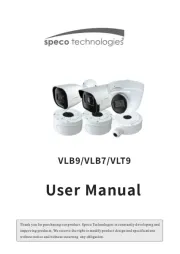
11 Maart 2025
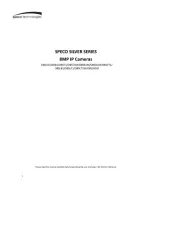
11 Maart 2025

27 Mei 2024

6 Juli 2023

1 Juli 2023

30 Juni 2023

27 Juni 2023

26 Juni 2023

25 Juni 2023
Handleiding Bewakingscamera
- Philips
- Thomson
- Trebs
- Konyks
- Buffalo
- Bosch
- Kogan
- Lindy
- Milestone Systems
- Dahua Technology
- Hanwha
- V-Tac
- Indexa
- Iget
- Arenti
Nieuwste handleidingen voor Bewakingscamera
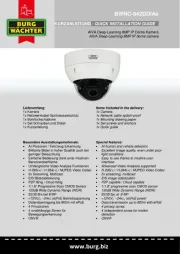
3 Augustus 2025
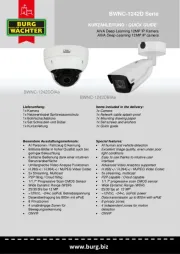
3 Augustus 2025
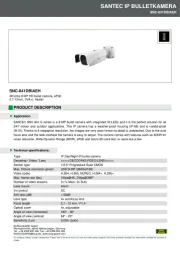
2 Augustus 2025
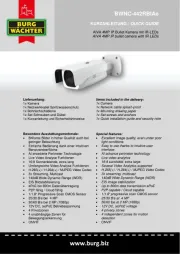
2 Augustus 2025
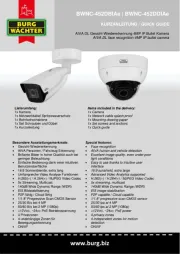
2 Augustus 2025
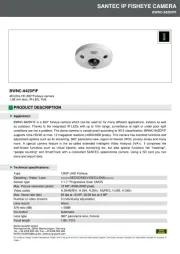
2 Augustus 2025
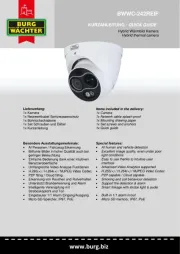
2 Augustus 2025
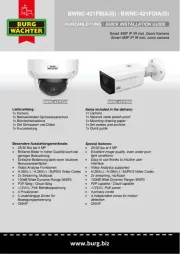
2 Augustus 2025
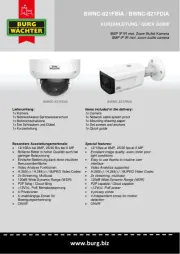
2 Augustus 2025
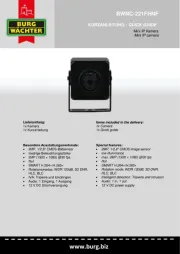
2 Augustus 2025
